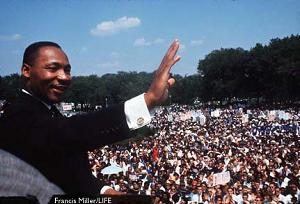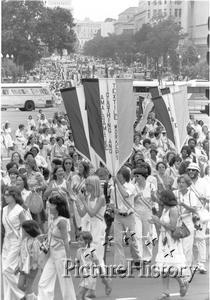Disney in the Classroom
Page 2 of 3

Martin Luther King Jr.
Change accelerated when black Americans took control of the Movement. In 1955, Martin Luther King Jr. led a boycott that integrated the city buses in Montgomery, Alabama; in 1958 the first black student graduated from Little Rock's previously all white Central High School; in 1960 sit-ins by black college students desegregated Nashville, Tennessee's businesses. The non-violent nature of these and other protests, and the violent opposition to black Americans' efforts to gain their Civil Rights, began to convince most Americans that there was a need to grant and to guarantee black Americans' liberties. This belief became a national commitment when Congress passed the Civil Rights Act of 1964 (Which made segregation illegal in public places.) and the Voting Rights Act of 1965. (Which gave Southern blacks the right to vote for the first time since Reconstruction.) Once African Americans had gained their too long delayed rights; other groups began to demand equal treatment as well. This led to the largest group of people in the United States, women, seeking and receiving equal treatment. Using the same Civil Rights legislation that gave African Americans their rights; women gained equal access to higher education, the opportunity to play school sports and the opportunity to pursue a much broader spectrum of careers.

Women protesters in the 1970's
The changes wrought by the Civil Rights Movement can be difficult for students who grew up long after the Movement to comprehend. This brings us back to Disney films.
